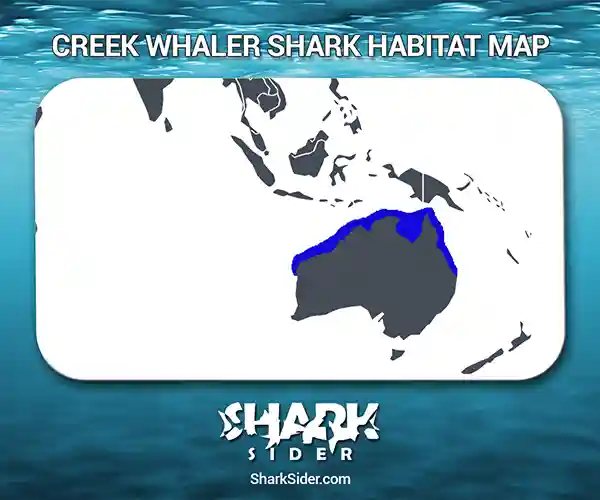The creek whaler shark is a requiem shark endemic to the coasts of northern Australia.
Creek Whaler Shark Scientific Classification |
|
| Kingdom | Animalia |
| Phylum | Chordata |
| Class | Chondrichthyes |
| Order | Carcharhiniformes |
| Family | Carcharhinidae |
| Genus | Carcharhinus |
| Scientific Name | C. fitzroyensis |
Description
The average length of the creek whaler is about 3.3–4.3 ft, though there have been specimens as big as 4.9 ft. Its body is shaped like a spindle but still quite stocky. The eyes are circular, and the nostrils are covered with loose skin flaps. Its snout is parabolic, with furrows on the corners of the arched mouth. Inside the shark’s mouth, one could observe 30 long and triangular upper teeth rows with serrated edges and 28–30 slender, upright lower tooth rows.
Creek whalers have large pectoral fins, two dorsal fins, with the first being larger than the second, and a caudal fin with a larger upper lobe.
Dorsally they are bronze to brownish gray above and are much lighter ventrally. Some creek whalers have a bluish tinge in their dorsal region as well.
Where do they live
Map Of The Creek Whaler Shark’s Habitat

This shark has a small distribution in northern Australia, ranging between Gladstone in central Queensland and Cape Cuvier in Western Australia.
It swims in the intertidal zone to a depth of 130 ft, preferring estuaries and inshore waters.
Behavior
Feeding
The diet of this shark consists of crustaceans and teleost fish like threadfin beams. Sometimes they will eat cephalopods if scarcity occurs.
Reproductive
Creek whalers are viviparous, with the females giving birth to a litter of 1-7 pups annually. The courtship and mating occur between May and July, with the newborns emerging after a gestation period of 7-9 months, around February to May next year.
Initially, the pups are 14-20 inches long and live in shallow nurseries. They reach sexual maturity at about lengths of 33–35 inches in males and 35–39 inches in females.
Interactions with humans
Despite being regularly fished for its meat, this shark’s population remains stable due to its high reproductive state. As a result, the IUCN classifies this shark as “Least Concern” or “LC”.
